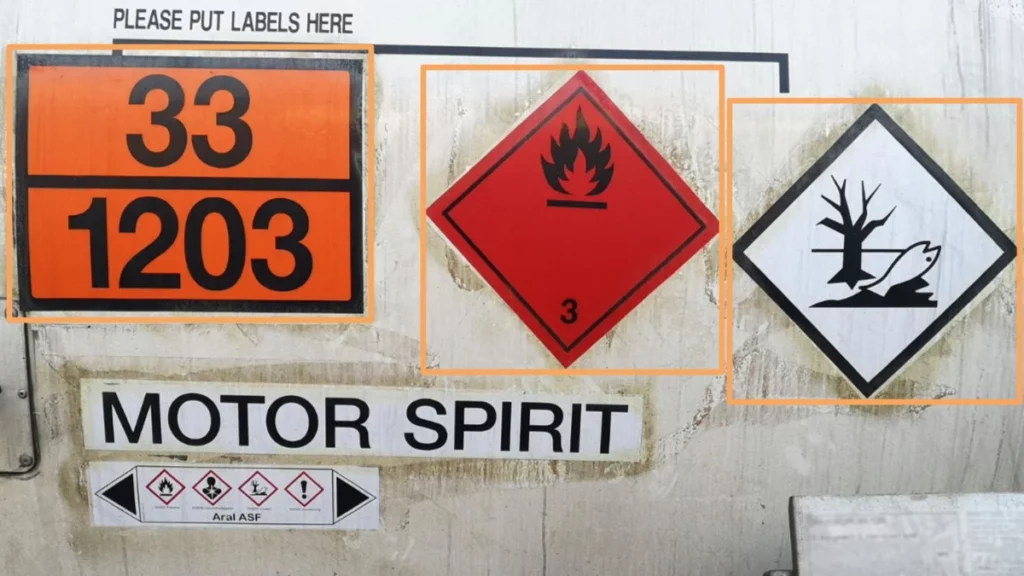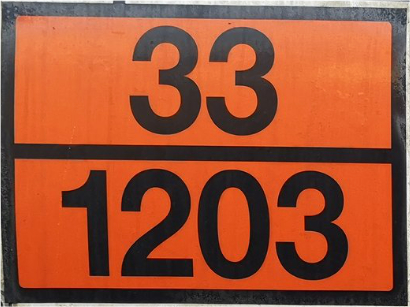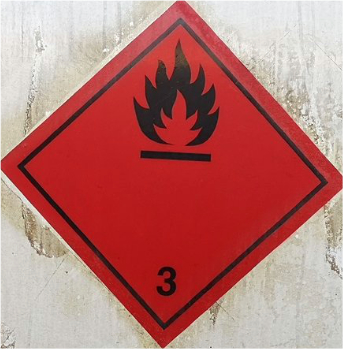The Transport of Dangerous Goods and our ADR engine

NESTOR TECHNOLOGIES offers automatic identification of ADR plates and pictograms, used for the Transport of Dangerous Goods (TGD) on trucks and containers or railcars.
ADR agreement, plates and pictograms
The transport by road of certain materials representing a danger to people or the environment, is governed by the European ADR Agreement “Agreement on the Transport of Dangerous Goods by Road”. It applies to 53 countries. The Order of May 29, 2009 (TMD Order) supplements it and covers transport on French territory.
All vehicles transporting dangerous goods by road are required to display an orange plate (or panel), known as an ADR plate. It must be visible at the front and rear of the vehicle, if a certain quantity of material is involved. This quantity varies with the category of material being transported.
The ADR plate is therefore essential for indicating of the risks involved in transporting hazardous materials. It can be blank, crossed out or removed if no dangerous goods are being transported.

Where applicable, the ADR plate indicates:
- On the top line, the associated ADR hazard code, (Kemler code). This identifies the main, secondary and subsidiary hazard, if any.
If a number is doubled, the hazard is higher (except 22, 44, 99).
A digit supplemented by a zero means that a single digit, the main hazard, is sufficient. The Kemler code can therefore be composed of 2 or 3 digits. It may also include the letter X, indicating a reaction in the presence of water.
- On the bottom line, the material code. This code indicates both the hazard and the material being transported
The material code, or UN number, is an international 4-digit code. It corresponds to the materials evaluated by the United Nations (3000 references).
In some countries, this code is found on pictogram labels.
The UN code is only used for tanker or dry bulk transport.

The ADR agreement also requires the fitting of placards – ADR pictograms – containing images of the main hazards. These ADR pictograms are diamond-shaped and indicate the hazard class. There are 13 types of pictograms.
Other information:
- On single-tank vehicles, the ADR plate must be mounted on the front and rear, and the hazard pictogram must also be mounted on the sides and rear.
- For multi-tank (and multi-material) tankers, the orange ADR sign must be mounted on the concerned tank the tank concerned. The hazard pictogram must be mounted on the rear and on the concerned tank.
- Empty outgassed tanks must have the orange sign crossed out.
- For non-tank trucks, the orange ADR plate must be blank on the front and rear. The hazard symbol must be mounted on the rear and sides of the vehicle.
- In the case of goods transported in a container, the pictograms are placed on all 4 sides. The vehicle carrying the container affixes the orange plate. Depending on the quantity loaded, the UN number may be affixed to the container.
In temporary storage areas (terminals, vehicle depots, etc.), containers and/or vehicles carrying hazardous materials must be clearly and quickly identified, so that they have access to a clearly defined area: secured, well-lit and not accessible to the public (as recommended by INRS).
More regulations
Thus the ADR laid the foundations for regulations governing the transport of dangerous goods by road. In the case of multimodal shipments, other regulations come into play depending on the sector.
- IMDG Code (International Maritime Dangerous Goods). The IMO (International Maritime Organization) lays down these rules, but the SOLAS and MARPOL conventions also supplement them. There are various international codes in addition to IMDG: IMSBC, IBC, IGC, INF…
- Code IATA (International Air Transport of Dangerous Goods): ICAO (International Civil Aviation Organization) sets the rules for the transport of dangerous goods.
- Code ADN (river transport of dangerous goods). 32 European countries are party to this code, an extension of the ADNR (Rhine) agreement governing national and international river transport.
- Code RID (rail transport of dangerous goods). Proposed by OTIF (Intergovernmental Organization for International Carriage by Rail). 39 countries have signed it, and it is supplemented by a French decree.
The reference : ADR
In a spirit of harmonization, these regulations take up the main themes of the ADR (classification, documentation, packaging, labeling, etc.), but have their own specific features linked to the particular risks of the means of transport used. For example, aviation regulations govern the transport of magnetized masses by air, whereas this is not yet the case for road transport. The ADR therefore concerns all those involved in the transport chain, who have clearly defined missions to fulfil.
Despite the international dimension of ADR, European Parliament Directive 2008/68/EC makes the application of ADR, RID and ADN mandatory within the member states of the European Union. All other countries follow the ADR rules in their entirety, with a few exceptions (e.g. USA).
TDG is a vast subject, closely linked to freight and logistics. It has therefore become essential to include it in code recognition systems. Thanks to Artificial Intelligence, NESTOR TECHNOLOGIES enables you to automatically identify a vehicle carrying hazardous materials.
Thanks to Artificial Intelligence, NESTOR TECHNOLOGIES can automatically identify a vehicle carrying hazardous materials.
The ADR Engine of NESTOR TECHNOLOGIES
With to our TREX-CONTAINER and TREX-WAGON solutions, and the ADR engine offered in our TREX Software Suite, NESTOR TECHNOLOGIES enables you to collect a maximum amount of information on the truck or train carrying or not dangerous goods, and to do this automatically.
The ADR engine complements our other engines, such as those for automatic container recognition (ACCR), license plate recognition (ANPR / ALPR / LAPI) and wagon number recognition (AWNR), to give you a complete identity card for a vehicle and its load.
Thanks to automatic identification of ADR plates and labels, our customers gain in security, traceability and efficiency.

